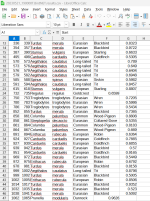Jon.Bryant
Well-known member
A Bing Search led me to this quote in a refence.Rechargeable LiOn
'How Does Cold Weather Affect Lithium-Ion Batteries?
Have you ever had to abandon an outdoor project or a road trip because your lithium-ion batteries had died prematurely due to the cold weather? Well, cold weather is hard on lithium-ion batteries and can significantly reduce their efficiency and performance, regardless of their reputation as one of the best batteries in cold weather.Lithium batteries discharge an electric current when the transfer of lithium-ion occurs from the graphite anode (negative electrode) to the cathode (positive electrode). This process slows down in cold weather thus weakening their power. As the temperature drops, the lithium ions will just coat the anode (lithium plating) thus increasing the resistance of the electrolyte and making fewer lithium ions available to cause the flow of electricity. This can reduce 20-30% of the rated battery capacity, although ideally, lithium-ion batteries should operate at 98-95% of the rated capacity.'
Although many batteries say that they work down to -20 C. From the research I have done I think the Ultimate Lithium disposable batteries are they only ones that continue to work at a high percentage of rated capacity.






